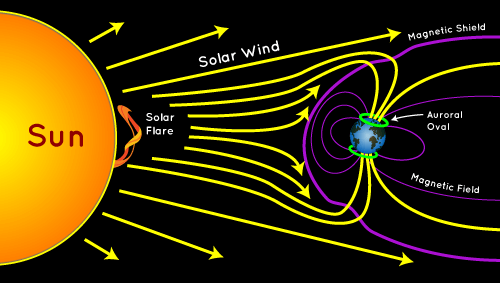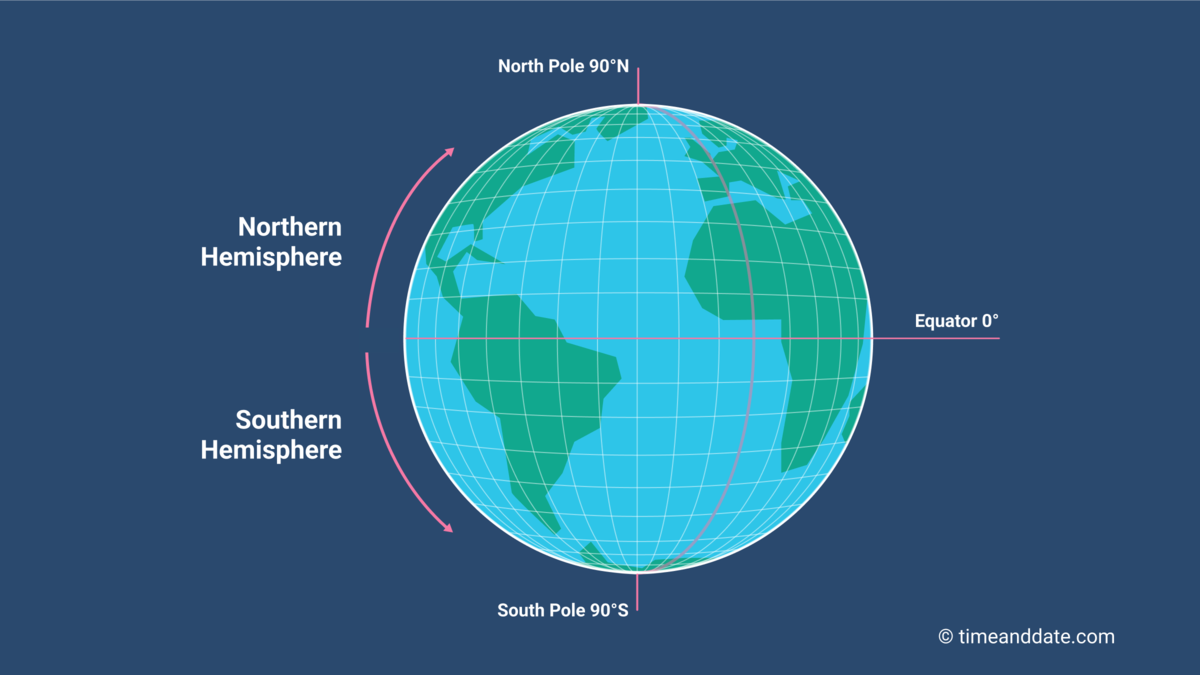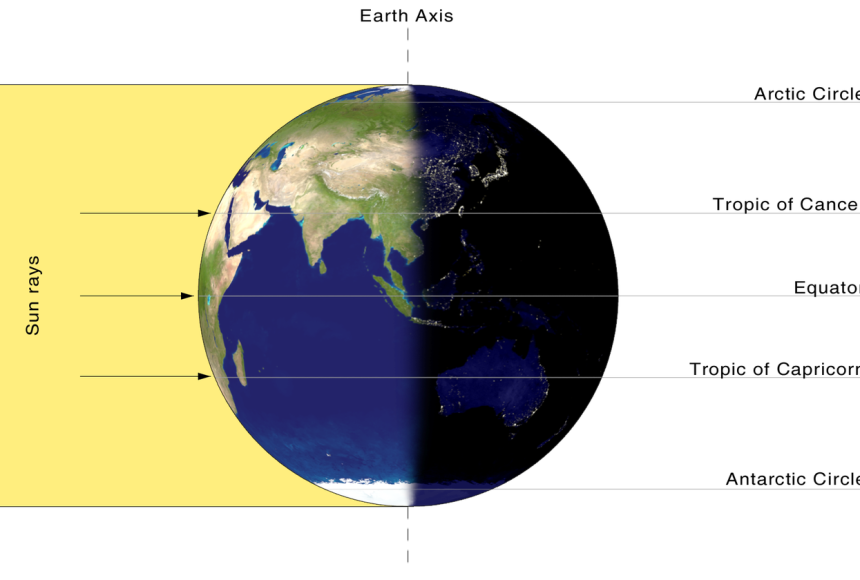Diving deep into the magnificent auroras
Image from: National Geographic
All of us have heard of Auroras and perhaps even seen them. They’re one of the most spectacular natural phenomena! In simple terms, they are shimmery lights that display in the sky that are only visible at night.
What causes auroras?
Now, the important talk about how they occur. Auroras are produced when the Earth’s magnetosphere swings back and forth or oscillates while interacting with the Sun’s solar wind. The Sun is full of electrically charged particles, called ions, and the solar wind is when these particles are ejected from its upper atmosphere named the corona. Earth’s magnetic fields protect our planet from such space weather since they can cause disruptions in our atmosphere and even prevent life.
Vocabubbleary: The magnetosphere is an area surrounding a planet controlled by its magnetic field. Our Earth has a teardrop or comet shaped magnetosphere which is the strongest one in our solar system!
Vocabubbleary: The magnetosphere is an area surrounding a planet controlled by its magnetic field. Our Earth has a teardrop or comet shaped magnetosphere which is the strongest one in our solar system!
Image from: National Air and Science Museum
Image from: NASA Space Place
Billions of these individual collisions continue at lower and lower altitudes until all the energy is used up, lighting up the magnetic field lines. Adding onto that, auroras generally occur around 97-1000 kilometers (60-620 miles) above Earth’s surface.
You may also be wondering what causes the different colors in auroras. There are a few factors affecting this such as the altitude or the type of atoms involved. Since our atmosphere is made of different particles, these atoms glow in lights of different colors. For example, oxygen emits a greenish-yellow color, nitrogen produces red light while hydrogen and helium emit blue or purple auroras. However, our eyes are unable to see this as it falls under ultraviolet light on the electromagnetic spectrum.
Lastly, if you’re concerned if auroras are dangerous, fret not since they do not threaten our existence in any way! However, active auroras may occasionally interfere with radio and radar signals.
What are the types of auroras?
There are two types of auroras; aurora borealis (also known as the Northern Lights) and aurora australis (Southern Lights). Both of these are breathtaking and colorful displays of light but the only difference is where they occur. Aurora borealis happens in the northern hemisphere while aurora australis happens in the southern hemisphere.
Vocabubbleary: Hemispheres are the two equal halves of Earth. We have four hemispheres; northern, southern, western and eastern. The equator (0° latitude) divides the planet into the northern and southern hemispheres while the prime meridian (0° longitude) divides it into western and eastern. The climates of the northern and southern hemispheres are different since they receive different amounts of the sun's light due to the tilt of the Earth.
Image from: Time and Date
Where and when to see auroras
Since the halo created by the collisions occurs near the poles, auroras can only usually be seen in polar regions near the Arctic and Antarctic circles. The best places where you can see the northern lights, or aurora borealis, include Iceland, Fairbanks in Alaska and Yellowknife in Canada. Northern lights are usually visible during the months of September through mid-May since there is usually more solar activity in that period.
You may have realized that northern lights are more talked about than southern lights which is because there are not as many places to see aurora australis from the Southern Hemisphere. Still, there are some locations such as Mount Wellington in Tasmania and Queenstown in New Zealand. As for aurora australis, they are more commonly seen from May to September, during winter and the spring equinox.
Vocabubbleary: An equinox is where the sun's rays shine at 90° to Earth's surface and passes through the Earth's equator. Only during an equinox, Earth's axis does not tilt toward or away from the sun. This makes both the northern and southern hemispheres experience approximately equal durations of daytime and nighttime.
In this post we’ve learnt the scientific explanation behind the dancing lights of the aurora that provide magnificent views. I hope you can appreciate auroras more after reading and consider seeing them one day! They're definitely worth the time, cost and cold weather to watch them in your lifetime!
Please leave us a follow to never miss out on our articles and support us! Follow us on our socials as well to stay updated and share suggestions on what you would like to read about. As always, enjoy learning about our beautiful universe while sipping space tea! 🔭✨
Where and when to see auroras
Since the halo created by the collisions occurs near the poles, auroras can only usually be seen in polar regions near the Arctic and Antarctic circles. The best places where you can see the northern lights, or aurora borealis, include Iceland, Fairbanks in Alaska and Yellowknife in Canada. Northern lights are usually visible during the months of September through mid-May since there is usually more solar activity in that period.
You may have realized that northern lights are more talked about than southern lights which is because there are not as many places to see aurora australis from the Southern Hemisphere. Still, there are some locations such as Mount Wellington in Tasmania and Queenstown in New Zealand. As for aurora australis, they are more commonly seen from May to September, during winter and the spring equinox.
Vocabubbleary: An equinox is where the sun's rays shine at 90° to Earth's surface and passes through the Earth's equator. Only during an equinox, Earth's axis does not tilt toward or away from the sun. This makes both the northern and southern hemispheres experience approximately equal durations of daytime and nighttime.
Image from: National Geographic Education
☕ Hubble Tea of the post! ☕
Today, we'll be learning about Hubble's discovery of a Galactic Jellyfish! The galaxy in the image is called the galaxy JW100 which is over 800 million light years away. It looks like a disk leaving behind a trail of star-forming gas in a process known as ram pressure stripping. This happens when galaxies travel through a gas spread out in galaxy clusters that strips away dust and gas from the galaxy, forming the stream as shown here.
Image from: NASA
Please leave us a follow to never miss out on our articles and support us! Follow us on our socials as well to stay updated and share suggestions on what you would like to read about. As always, enjoy learning about our beautiful universe while sipping space tea! 🔭✨
Socials!
Instagram: hubble._.tea
Twitter: hubble0_0tea








Comments
Post a Comment